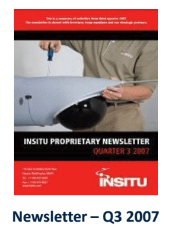In startups, investors may include family and friends, individuals, and angel investors. As the business grows, they may introduce more professional investors like higher-level ‘power’ angels, venture capitalists, and strategic investors. They can encompass a wide range of individuals.
In the early days, I am a firm believer in frequent communication and developing a strategy for each shareholder group – board members, major investors, others investors, and employees. Employees should be included by virtue of their stock options.
I believe it is vital to maintain communication as you go. Startup board members must always know what is happening – successes and failures – and should never be surprised. These people are your partners for support and also for money if you need it to continue growing the company and survive economically.
I think of it as bringing the extended team of investors along for a ride. All shareholder groups buy into your vision and want to be a part of it. Make it such that they can enjoy it and live vicariously through the company’s experiences. When our business conducts major demos, I send daily reports so that everyone feels a part of the process – the highs and lows.
Quarterly Newsletters
Employees gave up salary for stock options, and early investors took a risk on you. The vendors will create the ecosystem for your business to thrive and become potential strategic partners. To include them, leaders must feed stakeholders’ interest. In the beginning, I send out emails to key stakeholders about once a week, then transition to monthly, and finally, quarterly. At the drone company, Insitu, we sent these out even before we had significant deployments.
The first ones were simple Microsoft Word documents that included many pictures. As the company grew in status and revenue, the newsletters became more formal, and we had people pull them together. It almost looked like a magazine. We think we did an excellent job of conveying information.
 Every Vice President wrote a section for their department, which was about a page long and included pictures, and I wrote an executive summary. In the beginning, I personally wrote my section, but as the business expanded, I had people gather that information. I play an active role for all the content of any newsletter because it is critical to fostering relationships with stakeholders.
Every Vice President wrote a section for their department, which was about a page long and included pictures, and I wrote an executive summary. In the beginning, I personally wrote my section, but as the business expanded, I had people gather that information. I play an active role for all the content of any newsletter because it is critical to fostering relationships with stakeholders.
Interestingly, some of the investors told me that our quarterly newsletters were some of the most expensive they received. When they arrived, however, they stopped what they were doing and read it cover-to-cover because they really enjoyed it. Two investors, who thought they were retired, had so much fun with our newsletter that they went out and got involved in additional startups.
At my latest startup, Seeq, we go one step further and use Slack. With this app, we create channels for various areas of the business to which we can add stakeholders. For example, we might invite key contractors, board members, and investors to some of the Slack channels.
Although we are always communicating with employees, I generally include them in all shareholder publications and review board decks with them. I think it is valuable for them to see what we are sharing with our investors and board.
I think it is essential to include your shareholders and make it an experience where they feel like a part of the process. When it comes time for any expansion, they will be there for you. I also believe that overcommunication with stakeholders is generally rewarded. When you have a startup, plan from the beginning to develop a communication strategy with your shareholders.
Share this Post


